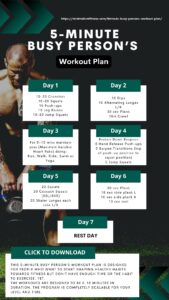First things first. I hate the word core, but it seems like everyone uses the word so I’m conceding that stance. Either way, trunk stability exercises or core exercises are absolutely necessary if you’re a beginner or an athlete. Due to fitness culture (thanks HIIT) we usually associate core exercises for beginners and athletes needing to be fast to get hot and sweaty.
Your “ab workout” doesn’t have to be this way.
COVID hasn’t helped either with the rise of influencers posting about their core exercises for beginners’ workouts and programs that are just downright dangerous. They may get you hot and sweaty but depending on where you’re at, your weaknesses and your training knowledge you may want to reconsider just following along with your favourite at-home HIIT program as they are usually just filled with “stuff” to make you jump around the room like an idiot.
What are the benefits of picking the right core exercises for beginners?
- Reduced injury risk during training
- Scalable and easy to add difficulty as you improve
- Great to offset those aches and pains like a stiff lower back
- Can benefit your other training like weights, kettlebells and running
You’ve probably noticed I’ve also mentioned the word “athlete” right beside the beginner level. The simple reason is that a decent system for development should be scalable for people’s abilities over a vast array of the population. Simply put, the system works if it can be applied to everyone. So let’s start with some key principles.
Focus on the breath first
We all love going hard during our training but quite often it’s the fundamentals that let us down. Breathing underpins everything we do and when it comes to core exercises for beginners, we all should start here.
By learning correct diaphragmatic breathing we can learn how to brace correctly in both static and dynamic positions in order to keep a safe spine during core exercises. It’s the second thing I screen for in the 10-step self-screen as almost everyone needs to work on it.
Move from floor to standing
When choosing the right core exercises for beginners this is probably the simplest and most effective rule you can follow. Own it on the floor before you take it anywhere else. When we are on the floor we have an increased sense of feedback which allows us to master movements quickly. It also gives us a sense of safety, which is useful for people that are injured or are looking to get back to activity.
Following both prone and supine positions we can move to:
- Quadruped
- Half kneeling
- Tall kneeling and;
- Standing
This is also referred to as the neurodevelopmental sequence.
Mobilise, Stabilise & Integrate
Before adding load, static or dynamic movement we need to ensure we have an adequate range of motion or mobility. This includes spinal flexion, extension and rotation to make sure we can get into the right position. The best core exercises for beginners that will improve this are:
- Roller rotations
- Active straight leg raise and;
- The bretzel series
Don’t forget you can also complete some trigger point therapy to help reduce tension in your lower back and hips to improve the results.
Core exercises that will improve trunk stability
Static stability is the next point of call where we can look at movements using an isometric hold or contraction. Choosing core exercises for beginners that involve static stability should be relatively simple on the floor or in developmental patterns as we use them in most of our training.
Looking at the floor to standing approach we can choose the:
- Deadbug (supine)
- Bird dog (quadruped) and
- Chop & lift (half and tall kneeling)
Yes, the plank fits in here too and they’re all in the video below:
Functional core exercises
The integration component comprises of two elements, dynamic stability and adding load. This is where we are usually at a point to add this into our regular training and can use exercises that allow the spine and limbs to move through range.
The turkish get up, goblet squat, loaded carry, renegade or gorilla rows work great here. Start with simple exercises you can master and increase the difficulty of your core exercises as you feel ready.
What do the best core exercises for beginners look like in a workout?
Here’s a 10 minute ab workout you can do with a single kettlebell or dumbbell. Complete the sequence below for 2-3 rounds. Use as little rest as possible and add more rounds if required:
60sec Brettzel e/s
60sec Brettzel 2 e/s
10 Roller Rotations e/s
10 Hollow Rocks
20m Loaded Carry
Swap the roller rotations dead bugs or bird dogs. You can also switch the hollow rocks with a single leg press or single leg lift.
Once completed you can test movements such as your push-up plank to assess the impact of the session
As you can see, the best core exercises for beginners are actually movement based that can fit into any ab workout or strength program. Once we have developed static stability (which is where most people stop, particularly in online fitness programs) we need to still add dynamic stability and load in order to truly say that we have a strong, stable and functional core regardless of whether you’re a beginner or athlete.
